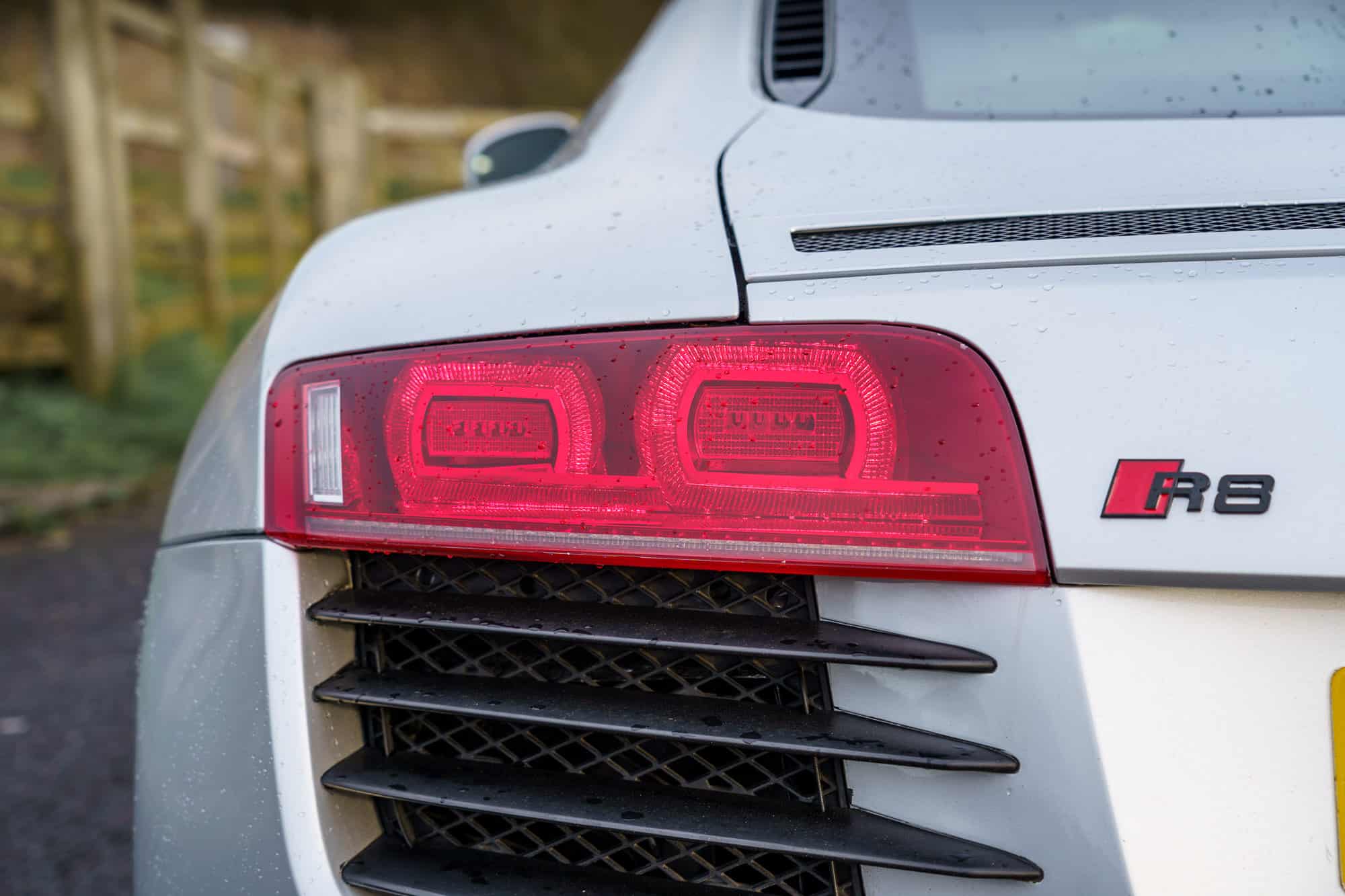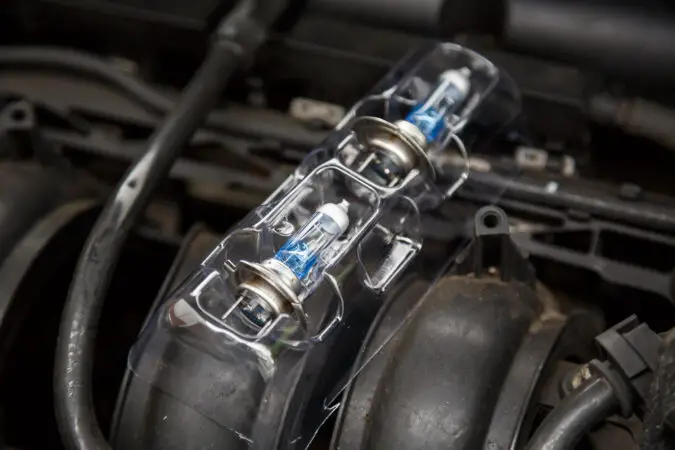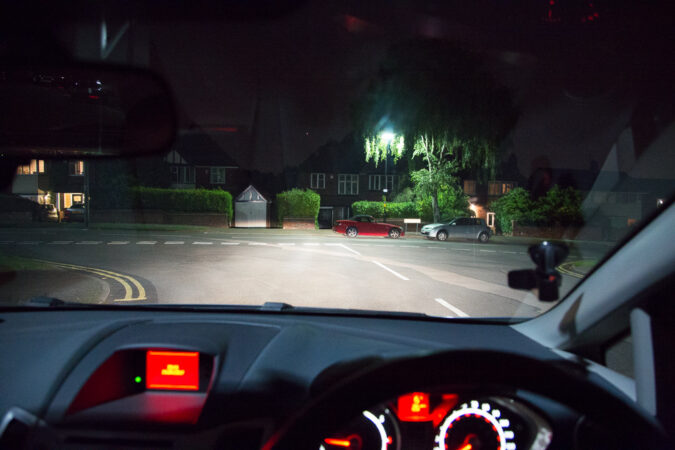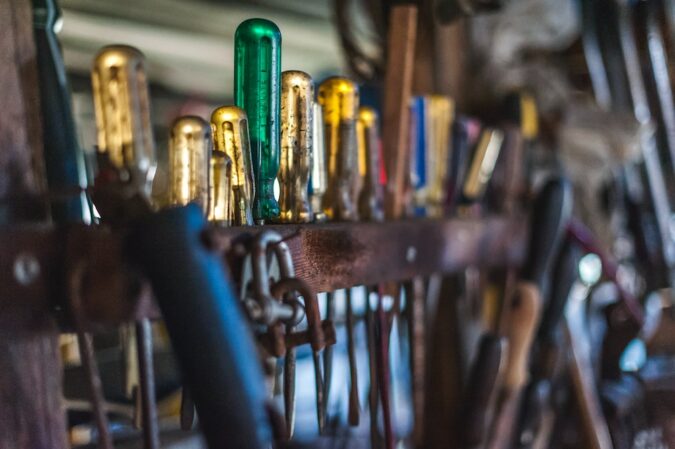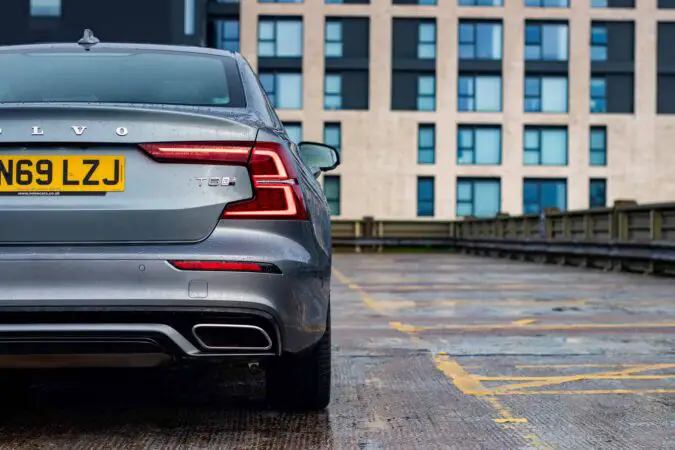One aspect in the evolution of automotive design that we see appearing very prominently more so now than ever is in regards to the lights. Every car now has its own lighting signature, somehow flashier and increased in ostentatiousness than the model that came before. Yet, there is a common fact that still remains, as the hammer of truth drops down as sirens start flashing behind you. You stop by the side of the road, and the officer asks you if you’ve thought about a tail light repair cost.
As they point out, your tail lights aren’t working. You get a warning, and drive back home, cursing over how much more of your wallet that you’ll have to empty out to fix this. Broken tail lights aren’t new, and they come in all shapes and sizes. From smashed glass, and burnt-out bulbs, to the electrics going berserk. In any case, the tail light repair cost is one that you’ll have to suck up. Not only is it illegal to drive around with a broken tail light, but it’s just not pleasant to look at, is it?
Tail Light
That might sound like a silly question to ask, but it’s worth diving into before we get to the meat of our guide here on tail light repair cost. They’re, well… Lights. Tail lights in particular work to let other drivers know that you’re there in front of them.
Especially so when it’s dark out and there’s very little visibility, or if the weather turns torrential. Whenever the headlights are turned on, the taillights will start shining, too.
Another key safety aspect of tail lights can be foretold by how they’re placed along the extreme flanks – or rear edges – of your car. This way, folks behind you can roughly judge the size or the shape of the vehicle that you’re driving.
Is it a tiny hatchback, a large minivan, or an even bigger truck? This way, and regardless of how difficult it may be to see given the weather or the time of day, you can always be kept well informed of the vehicle that’s in front of you.
There is, however, a common misconception. A lot of people get confused between the ‘tail’ lights and the ‘brake’ lights. The tail lights always stay on so long as you have the lights turned on.
The brake lights, meanwhile, are an extra set of lights that complement the tail lights. They start illuminating when you press down on the brake pedal, glowing more brightly than the tail lights by default. This is to warn the drivers behind you that you’re in the process of slowing down.
Tail Light Assembly
Lights, on their own, are very complex components to disseminate. It’s become even more intricate in recent years, as cars have evolved to use pricier and high-tech LED tail lights. They’re generally more energy-efficient and last longer than their predecessors.
The latter is halogen, which is still commonly found in most cars today. Oh, and let’s not forget xenon. While it may not be as efficient as the other two, xenon lights can shine with increased intensity and brightness.
However, the entire lighting system on your car is more than just the bulbs beaming away. Those bulbs are a good starting point, as they provide a source of light. One misunderstanding that a lot of people make is that (tail) light bulbs are naturally red.
Unless they’re LEDs that can be produced with color, the bulbs are actually white. Or, yellow in some cases, but mostly white. So, how is it that your tail and brake lights glow red, then? This is all thanks to the tail light’s lens or housing.
Often made of polycarbonate plastic – or sometimes glass, in older cars – the lens is what gives your lights its color. The bright white light shines through the red housing, culminating in tail lights that will be seen as red overall.
It’s not just the taillights, too. Your amber turn signals also have white bulbs underneath, reflecting through orange plastic lens covers. The entire thing is then encased in the tail light assembly. Here, you can find shiny reflectors to help amplify and direct the lights.
Parts Of Tail Light
And just when you thought it’s over, there’s a lot more at work in there. All of these, mind you, may add up to the final tally for your car’s tail light repair cost. Your bulbs will have to plug into a socket, which it’ll tap into for electricity.
There are also meters worth of wiring that loops your car’s tail lights together with the rest of the electrics. All cars have what is called a brake switch. Placed under your car’s brake pedals, pressing them down will start illuminating the brake lights.
In certain modern cars, lights have various sensors. One example is an ambient sensor, which would detect how dark or bright the surrounding environment is. When it gets too dim, the sensors will turn on the head- and tail lights automatically.
Then, we have the fuses that protect the rest of your car’s electrical system. If there’s too much current going through that could damage the lights or any other electrical component, the fuse will burn to prevent current from flowing through.
Broken Tail Light
Given the complexity of a car’s lighting system as a whole, it’s no surprise then that problems can start appearing every now and then. They may not happen all the time, but these issues can lead to your car’s lights not turning on when you want them to.
It’s important, therefore, that we try to understand more about what these difficulties are. Knowing them may help to narrow down and get a more precise comprehension of your car’s potential tail light repair cost.
Tail Light Repair Cost, Problems #1: Faulty Bulb
Of course, this will always be the first answer whenever the conundrum of ‘why aren’t my tail lights turning on’ pops into your head. The bulb is the first part of your car’s lights that’s most likely to go out.
Thus, it’s the first thing that commonly gets inspected if you or a technician is diagnosing what’s wrong with your car’s lights. Deep inside the bulb, there is a piece called the filament.
This is what burns up inside the bulb, and this is the main source of light. It’s worthwhile to take the bulb out of its socket and inspect it closely. Is the filament burnt up or broken?
Then this may be the reason why your tail lights aren’t illuminating. If you decide to replace the bulb with a brand new one, and your light is still stubbornly off, something else might be the cause.
Tail Light Repair Cost, Problems #2: Bad Fuse
As we noted earlier, fuses are made as a safety feature. This is to ensure that excessively strong currents won’t break any of your car’s precious electrics. The downside is that the fuse basically destroys itself in the process, by breaking.
A metal strip inside the fuse splits, which cuts power to whichever component it’s supposed to protect. Tail lights have their own fuses. A car’s fuse box can usually be found in the engine compartment. Although, some cars have them placed inside the glovebox, and elsewhere. Now, find which fuse is responsible for the tail lights.
Remove it, and use a circuit tester to see if it’s tripped. If the tester doesn’t illuminate, it means that you’ll need a new fuse. Make sure the replacement is of the exact same amperage.
Tail Light Repair Cost, Problems #3: Socket Failure
For the bulbs to work, they need to be securely plugged into a socket within the tail light assembly. This is how they’re able to steadily accept electricity. Thus, even if you have a perfectly good light bulb, a defective socket means that the lights still won’t turn on.
Your sockets can fail for several reasons. The socket may have been wired incorrectly, or the wiring inside has been damaged. Any moisture getting into the socket will cause it to break, too. You can inspect the socket itself to see if there’s any visible damage.
More specifically, take a look at the socket’s pins, and see if it’s bent or broken. The socket may have been stained from moisture, which is another tell-tale sign that it’s very probably gone by now.
Tail Light Repair Cost, Problems #4: Faulty Electrical System
The root of it all is your car’s electrics, which can wear out and fail. Speaking a bit more on the socket from earlier, you could check it with a multimeter. If there isn’t even a tiny bit of electrical current reaching the socket’s pins, then there might be something terribly wrong with your car’s electrical system.
You could also sense this if the fuses from before are all fine and dandy. Yet, the tail lights don’t turn on. In any case, there may be a faulty wire somewhere. For the most part, an inspection should be done professionally by a qualified technician.
One thing that you can do, however, is to check the ground strap. This is a thick black wire that connects the battery’s negative terminal to the chassis of the car. A broken ground strap will not be able to deliver electricity to the sockets.
Tail Light Repair Cost, Problems #5: Defective Control Switch
Inside the car, what turns the lights on is a control switch. This is an electrical hub, where pushing a button or twisting a knob from your end, will prompt it to illuminate the lights.
This same control switch also doubles for turning on the headlights, turn indicators, parking lights, and so on. If the wires look fine, then you’ll have to pry open the control switch from your car’s dashboard and have it checked with a multimeter.
Tail Light Repair Cost, Problems #6: Damaged Ambient Light Sensor
We’ve discussed briefly earlier that newer cars can turn on and adjust the brightness of their lights automatically. They do this through the ambient light sensor, which then calibrates based on how light or dim it is outside.
For example, they can turn on the lights without any input as you drive into a dark and gloomy underground car park.
But then, they’ll turn the lights off again once you emerge into the sunlight on the other side. If you’ve noticed that neither the head- or tail lights turn on at all, your ambient light sensors might be malfunctioning.
Should you be able to still turn on the lights by hand, then it’s probable that the sensor is just a bit dirty. A smear on the lens of the sensor can impede its function.
Tail Light Repair Cost, Problems #7: Foggy Lens Cover
Moving onto a less serious problem that you’ll likely face when discussing tail light repair cost, is the lens cover or housing. Over time, they can turn foggy or get clogged up (and learn how to fix foggy headlights).
In effect, your lights aren’t able to illuminate as brightly as they once did, or they might have a slightly dark or yellowish hue to them. The foggy effect is caused by the plastic cover getting exposed to the sun’s ultraviolet rays.
This exposure will hence degrade the plastic material and leaves a residue. Granted, this usually happens on your headlights, but tail lights might be subject to clouding up, as well.
It may be caused by other factors, such as oxidation, dirtied up by road debris, and so on. Fixing this is actually quite simple. From home, you can use a watery mix of baking soda, or plain toothpaste to scrub off the residue from the lens.
Tail Light Repair Cost, Problems #8: Moisture Inside The Light Assembly
You may be surprised to find condensation appearing from the inside of your tail light assembly. But with seemingly air-tight housing, how could this have happened? Well, it’s all for the sake of heat. In other words, your car’s lights generate a lot of heat while in use.
When there’s an imbalance of heating and cooling down, it can be damaging to your lighting assembly as a whole. One example is when the outer surface of the lens cools down faster than the air inside the lighting unit.
This is how condensation forms. Most lights have vents to manage an equilibrium of temperature between the in- and outside of the lighting unit. Although the seals can be deformed, or if there are cracks on the light housing. When this happens, moisture can start forming inside.
To fix this, you can try to remove and disassemble the whole lighting unit to wipe the condensation dry. However, there is a much simpler fix. Walk around the lights, and make sure the vents are clear of any debris.
Next, just go out for a drive with the lights turned on. This should create enough heat to dry off the moisture. Then, let it evaporate slowly and vent out of the head- or tail light unit.
How Much Is A Tail Light
Alas, we can get into detail with you on how much a tail light repair cost is. In all, it ranges anywhere from being quite cheap, all the way to insanely expensive. On the former side of things, lights will routinely burn out, just like the lights in your home.
Bulbs, after all, have their own usable lifespan. Getting new bulbs is very straightforward, costing you no more than $20 or so each. Or, around $100 if you count extra labor fees. A bulb socket can be had for as little as $5 to $15.
A wiring harness for the tail lights is selling for just $15 to $35. The rest of the individual lighting bits and pieces are relatively affordable on their own. A new tail light switch, accounting for labor, will cost from $70 to $100.
The plastic and colored lens over on top are a bit more pricey. Depending on the make and model of your car, a replacement tail light lens will leave you lighter by between $100, and upwards of $750. But what if the problem is bigger than any of those?
Cost To Replace Tail Light
Let’s say you’ve gotten into a minor accident, and the light assembly got smashed. Or, the wiring and electrics deep inside have gone awry. In this situation, be prepared to pay a lot of money.
The average price for a whole light assembly – just one, mind – will cost you anywhere between $200, to $2,000 on the high-end. Luxury or exotic cars may even have a higher price tag than that. Older or economy cars are naturally cheaper to fix, as they generally use simple and conventional lights.
In fact, the raw parts for the whole tail light assembly can be found for around $30 to $250. That said, newer cars have various extra gadgets donned on top of the lights. There are LEDs, ambient light sensors, or laser headlight signatures.
Some cars have headlights that swivel in the direction of where you’re turning the wheel. Thankfully, tail lights don’t often have this. Nevertheless, replacing the lighting assembly in most modern cars can be complex and expensive with all these add-ons.
How To Fix Tail Lights
If you’d like to save money or are urgent enough that workshops aren’t a convenient option, then you could fix your tail lights by yourself. Let’s say you’ve bought a new tail light assembly, and would like to have that installed on your car.
It’s actually one of the easier maintenance work or repairs that you can do at home. You won’t need a lot of tools for the job, too. All you require is a screwdriver, a ratchet set, and preferably a set of safety goggles.
The first thing you’ll need to have on hand is, of course, the new light unit. You should then have a guide specifically for your car’s lights and electrics. Your car’s owner’s manual may have all the information that you need.
It will be important to learn all the ins and outs of how your car’s lights actually work, and how they’ve been designed. Although doing it DIY-style might take some time, and will cause a lot of anxiety, you’ll feel quite accomplished once it’s done.
How To Replace A Tail Light Cover
- Disconnect your car’s battery. As you’re working with electrical components, it’s crucial that you switch off the electricity supply for your own safety.
- You may have to remove the rear bumpers before you can get access to the tail lights. So, have a peek at how this is done safely. In some cars, you may also have to remove certain interior linings, mostly around the trunk.
- Find, and then remove all the bolts and screws that are holding the light assembly in place. You can often find them hidden beneath the bumper.
- Pull away the light assembly from your car. Do this slowly, as there might be retainer clips in place. So, move your hands around the lights, and gently unclip them.
- Remove and unplug all the electrical accessories – i.e. wiring – from the back of the tail light assembly.
- Should your replacement tail light unit not include a bulb, you’ll need to take one from the old assembly. In most vehicles, you can remove the bulb socket entirely by turning it counterclockwise.
How To Install A Tail Light
- Double-check to make sure the light unit here is the same one that matches your car. Once that’s done, you can screw back in the bulbs and sockets from the old lights (if you need to).
- Reconnect all the wiring and electrical accessories to the back of the new tail light housing.
- Mount the tail light assembly back into the body of the car. Orient it properly, so the new lights can clip back into all the retainer clips from before. Gently push and nudge it in so that it clips properly, one by one.
- Reattach all the bolts and screws that hold the entire housing together. Tighten them, but not overly so. It’s best if you have a torque wrench and screwdriver to prevent overtightening.
- Reattach the rear bumper and interior lining back onto the car.
- Reconnect the battery, and test out the lights to see if they’re working.
Tail Light Repair Cost: In Conclusion…
In short, you’ll find that it’s hard to find an exact tail light repair cost from a general estimation. For most cars, you should be expecting a single tail light assembly replacement leaving your wallet at most $500 lighter.
Other cars, meanwhile may empty your wallet a lot more than that. Smaller problems like faulty individual parts are thankfully quite cheap. Overall, though, lights are surprisingly an expensive and complex repair job, but one that’s made easier thanks to the fact that lights aren’t generally troublesome.
FAQs On Tail Light Repair Cost
If you’re still unsure about a tail light repair cost, our FAQs here might help…
What Is A Taillight
Tail lights function to let other motorists behind you know that you’re in front of them. Thus, allowing them to not only notice that you’re in front of them and they have to be careful. But also, motorists behind you are able to gauge how far they are from you based on their distance from your car’s tail lights, and not get too close. Plus, those tail lights are always placed near or on the flanks/corners of a car. This further enables other motorists, especially in the dark, to roughly judge the size and shape of your car. Thus, they can get an insight into what they’re trailing… A small car, or a huge truck. Just be wary of mistaking the tail lights with the brake lights, though. Unlike a tail light, the brake light only lights up brightly to tell others that you’re braking.
Where Can I Get My Brake Light Fixed
If your car’s brake lights are malfunctioning, there are a few places that you can take it to for repair. Most workshops, dealerships, or service centers have the means to at least inspect the brake lights and diagnose any issues. For simpler repairs, such as changing the bulbs, even auto parts stores could do it for you. If you don’t have the time or liberty to drive over to a workshop, you could always try calling over a mobile technician to come over to your home and repair the brake lights there. Seeing that the brake lights are an electrical item, you might even consider bringing your car over to auto accessories shops. While these establishments normally work on fitting aftermarket parts, they should have the parts and expertise to fix a brake light, too.
How Much Does A Brake Light Cost
The cost of fixing your car’s brake lights will differ depending on what needs fixing, in the first place. A brand-new bulb should be inexpensive. It could cost you as little as $20 per bulb. However, the labor costs of having a professional mechanic replace it for you will be costlier. Normally, these would average around $100 for around an hour’s work. Besides the bulbs themselves, it’s possible that the bulb socket has gone awry. These, too, are pretty cheap, setting you back no more than $5 to $15 for each socket. A wiring harness is slightly more expensive, at around $15 to $35. Meanwhile, the brake light switch will add another $70 to $100 to the total cost. The lens cover is another $100 (at least), while the entire assembly goes anywhere from $200 to $2,000.
How Much Does It Cost To Fix A Headlight
Just like the tail lights, a car’s headlights are susceptible to needing repairs, too. The most common issue is burnt-out headlight bulbs. You could usually find brand new bulbs for around $15 to $20 each. Although, getting it replaced by a professional mechanic is going to cost you a bit more, roughly $50 for the work. On the other end of the price spectrum, replacing the entire headlight assembly won’t be cheap. At the very least, you’re looking at anywhere between $250 to $700 for the entire replacement process. The headlight assembly itself could be found for as little as $75, though it should be priced closer to $200 or more. The majority of the aforementioned cost goes to all the labor required to remove the old assembly and install the new one.
How Much Is A Tail Light Bulb
One of the most common issues to impact your car’s tail lights are burnt-out bulbs. Replacing them is relatively simple and they’re pretty inexpensive, too. The final tally does vary depending on what sort of bulbs you’re looking for, though. More old-school and simpler halogen tail light bulbs will set you back about $3 to $5 each, on average. Meanwhile, LED tail light bulbs are more expensive, at around $10 to $20 per bulb. The costliest aspect of replacing tail light bulbs isn’t the bulb itself. Rather, it’s the labor costs to consider if you’re having it replaced professionally by a mechanic. The process of removing the tail light lens cover and replacing the bulb will take around an hour, so it’s good to spare around $100 to cover any labor charges.

